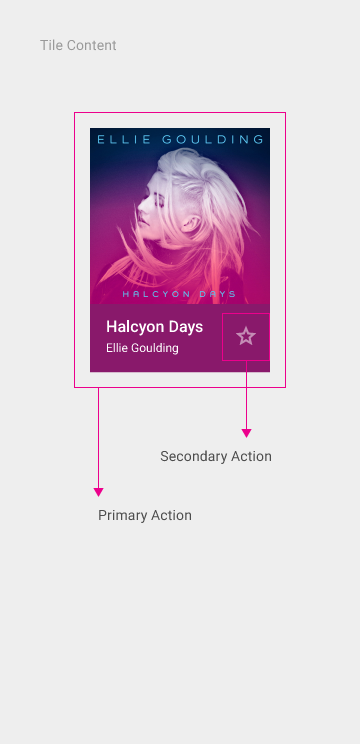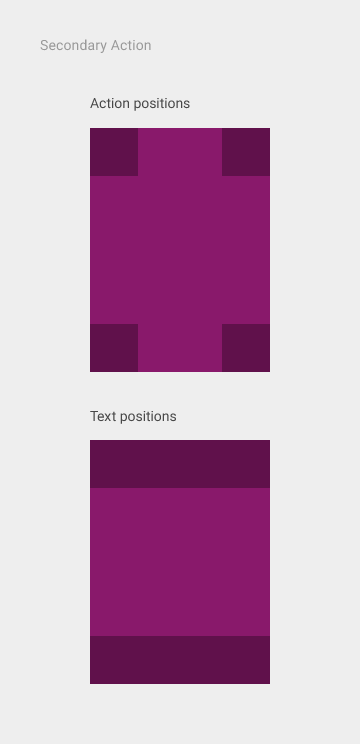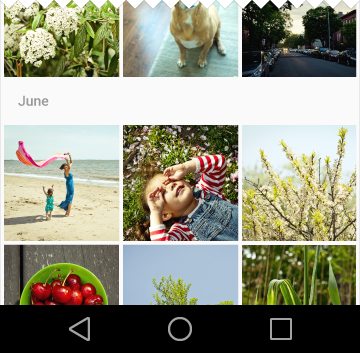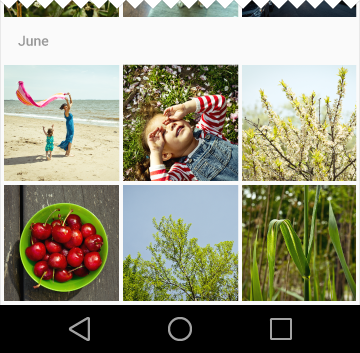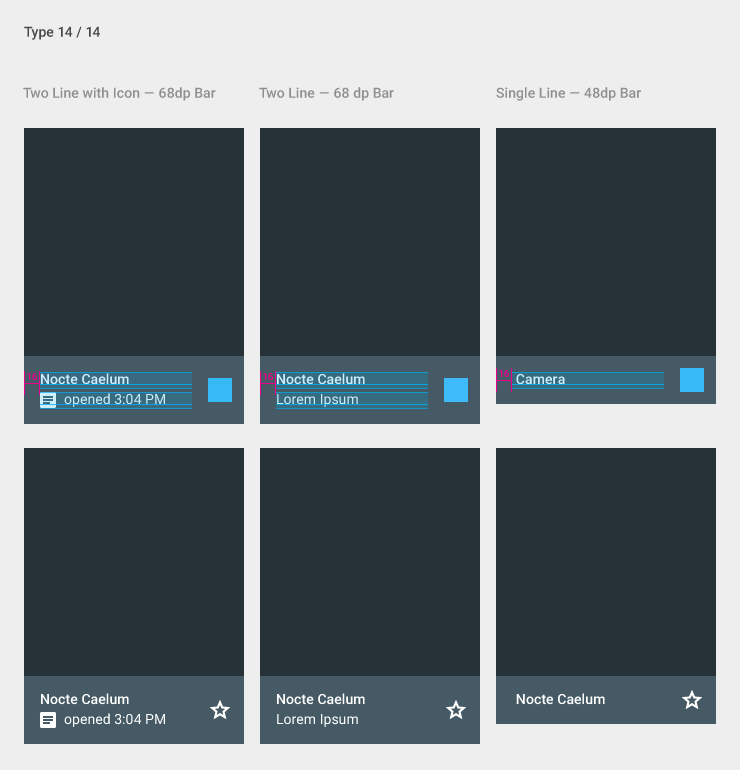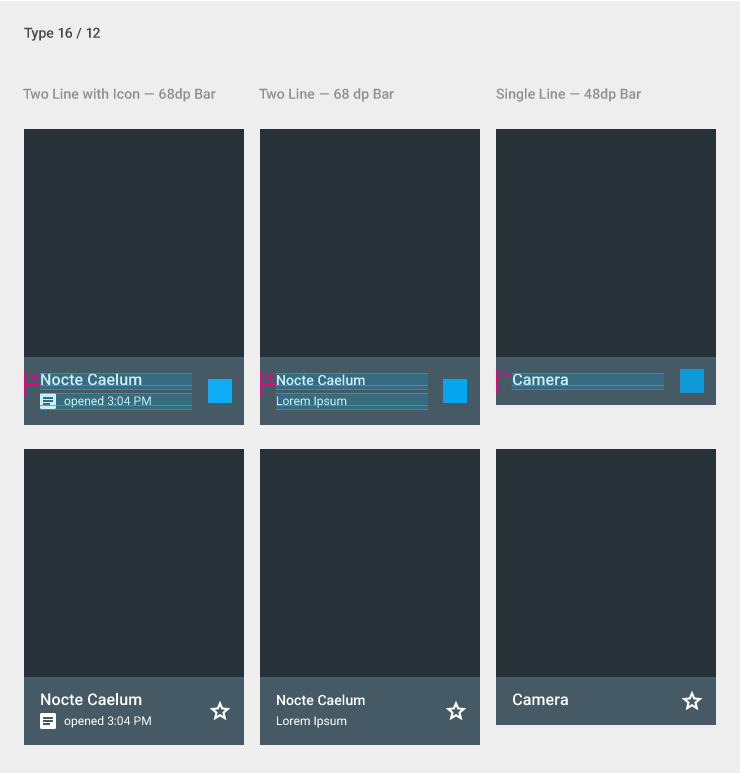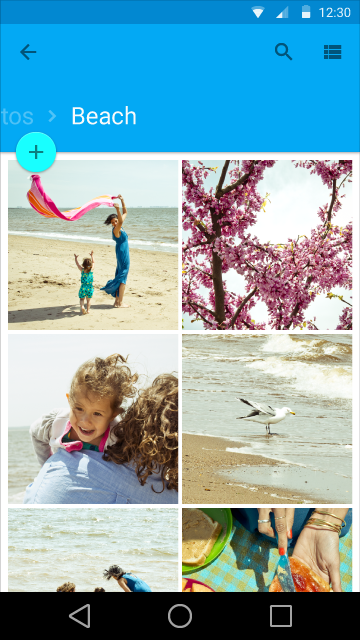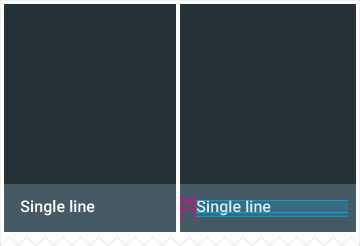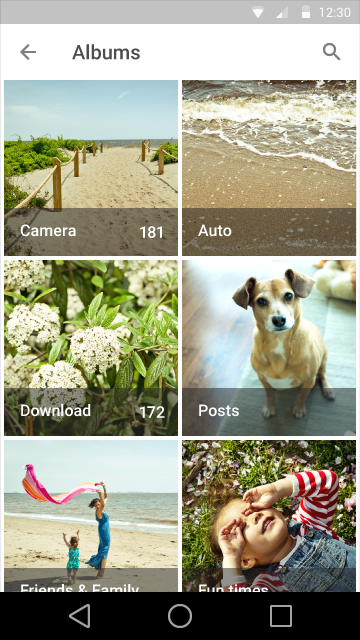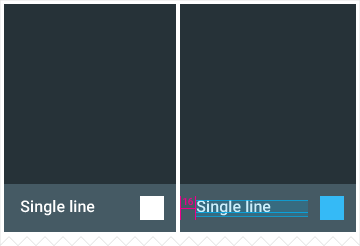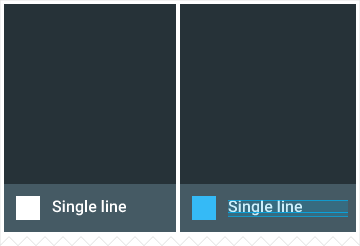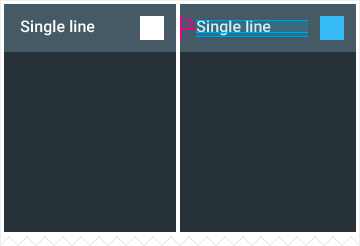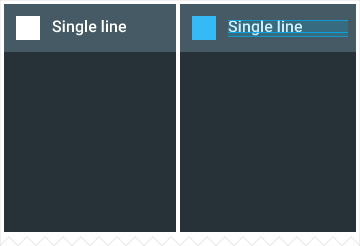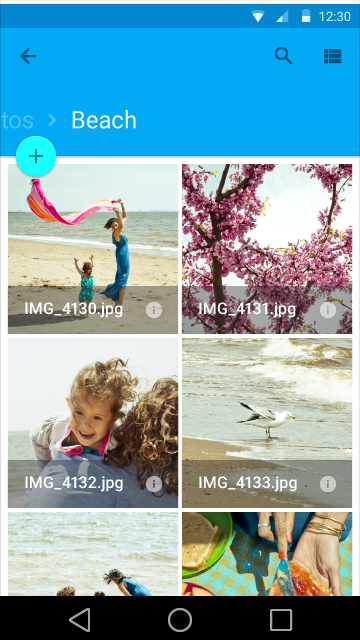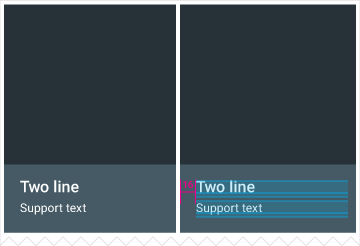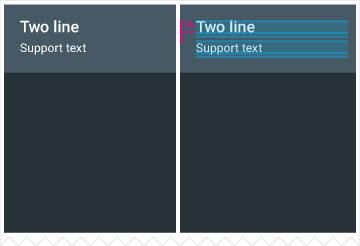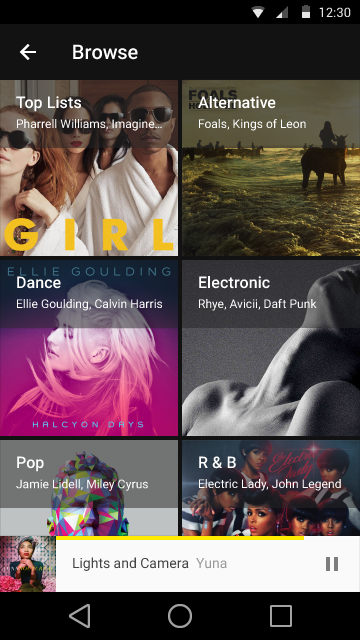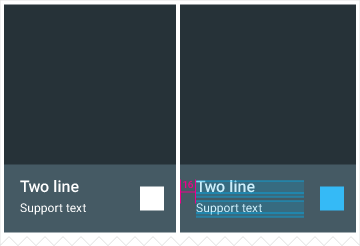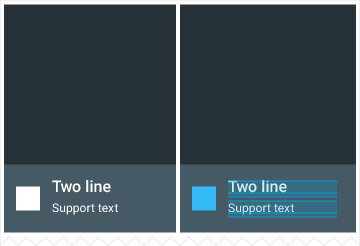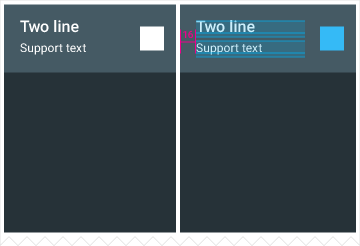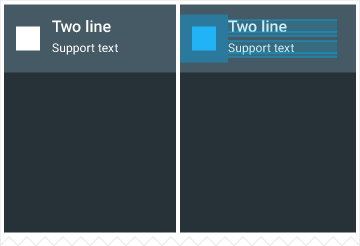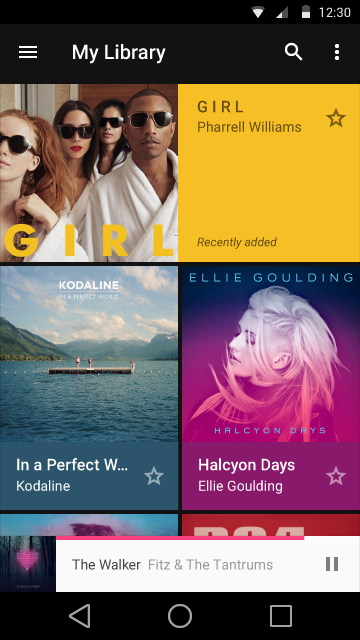A grid list is best suited to presenting a homogeneous data type, typically images, and is optimized for visual comprehension and differentiating between like data types.
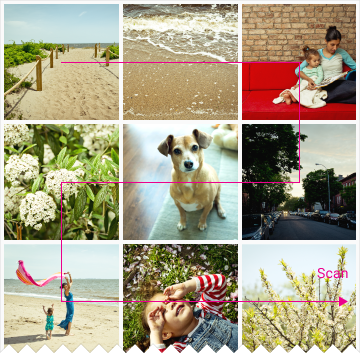
A grid list is a continuous element consisting of tessellated, regular subdivisions called cells that contain tiles.
Cells are arrayed vertically and horizontally within the grid.
Tiles hold content, and can span one or more cells vertically or horizontally.
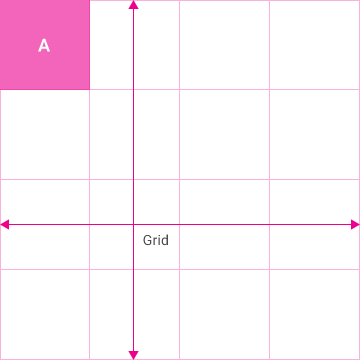
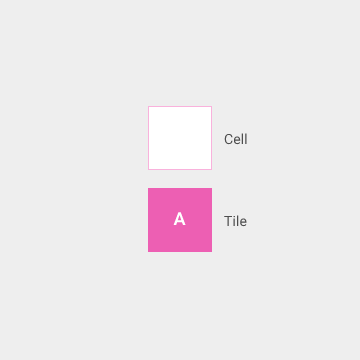
If the text in tiles needs to be prominent enough to distinguish between primary content pieces, consider using a different container, like a list or cards, that is optimized for displaying text and facilitating reading comprehension.
Lists: Optimized for reading comprehension, particularly when comparing a set of data containing multiple data types.
Cards: Used for content with inconsistent formatting, for example, photos with captions of variable length, or data sets with heterogeneous content, for example, a mixed collection of photos and videos and books.

